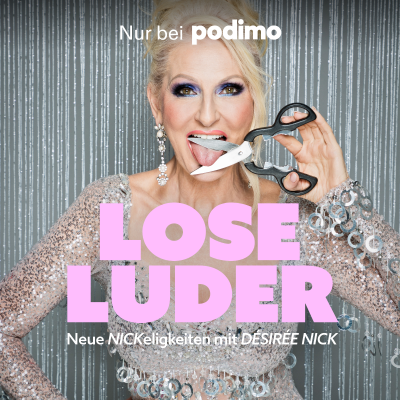
Unconventional Wisdom
Englisch
Gratis en Podimo
Kostenlos hören bei Podimo
Starte jetzt und verbinde dich mit deinen Lieblingspodcaster*innen
- Vertraut von über 1 Mio. deutschen Hörer*innen
- Über 1.000 lokale Podcasts und Shows – nur bei Podimo
- Keine Zahlung nötig
Mehr Unconventional Wisdom
Welcome to the Unconventional Wisdom podcast. The show that helps you achieve financial security & freedom. Insights based on in-depth experience from Canada's #1 financial planner blogger. Find out what really works. Your host, fee-for-service financial planner & tax accountant, Ed Rempel.
Alle Folgen
145 FolgenExponential Thinking – How Major Wealth Happens
Your investments may grow a bit each year, but have you wondered about how some people grow major wealth? Instead of growing 10%, how can they be 10 times larger? Many ordinary people build up millions of dollars, without having a high income or inheritance. How does that happen? It's because real wealth doesn't grow linearly. It grows exponentially — through compounding, smart investing, and a different way of thinking about progress. In my latest video, podcast episode, and blog post you'll learn: * What is exponential thinking? * What are some real life examples? * How does the "Rule of 72" help you? * Why is exponential growth all around us today when it wasn't decades ago? * Why does investing for growth give you many times more than investing for income? * Why is borrowing to invest so effective? * Why should you learn to think exponentially? Once you start thinking exponentially, you'll see opportunities for wealth and growth everywhere.
The Meaning of Life - Responsibility
What is the meaning of life? What truly makes it worth living? How can having a meaningful life help you become financially independent? It comes down to responsibility. Choosing what you want to be responsible for gives your life structure, direction and purpose. It's also the same mindset that can help you become financially independent. In my latest podcast episode you'll learn: * What is the meaning of life? * What makes life worth living? * How do many people avoid taking responsibility for their life? * How can having a meaningful life help you become financially independent? * How can you become wealthy? If you've ever wondered how to align your deeper "why" with your financial success, this post is for you.
Retirement Rookie: Worried about a Market Crash Right After Retiring?
Being worried about a market crash right after retiring is a major fear for many people both before and after taking the plunge. I often hear these anxieties: "I'm scared to retire even though I have enough money in every projection. What happens if there is a market crash right after I retire?" "We just retired, but are hesitant to spend money in case we have a market crash." You're not alone—thousands of people have had the same worry. But does the data actually support this fear? In my latest podcast episode you'll learn: * Do we need to worry about a market crash right after retiring? * Should we have the same worry in future years? * Can I really be financially independent for life? * How can I confidently take the plunge and retire when the market might crash? * What should you do when the market crashes during retirement? * Should I go back to work? * What has happened in history with market crashes during retirement? * What types of investments most reliably provide a solid income for a 30-year retirement? * How can you let go of the fear?
Go Big or Go Slow: Why 10x Wealth Is Easier Than 2x
♦Go Big or Go Slow: Why 10x Wealth Is Easier Than 2x♦ This title may be hard to believe, but it is a common theme in coaching for small business entrepreneurs. The concept is from the popular book "10x Is Easier Than 2x: How World-Class Entrepreneurs Achieve More by Doing Less" by Dan Sullivan and Dr. Benjamin Hardy. Most of us think about incremental improvements in our lives, not dramatic life-changing improvements. That would require a completely different way of thinking. The 10X concept works for entrepreneurs. You can also use the 10X concept to dramatically improve your finances. In my latest podcast episode you'll learn: * Why does this concept work for world class entrepreneurs? * Stories of how and why it worked. * Why can becoming 10 times wealthier be easier than 2 times? * How can this idea be used for your finances? * What specific concepts can give you 10X wealth? * How can you figure out what 10X concepts might be right for you? This is a unique post that is a completely new way of thinking. It includes some insight into my mind and my life.
Why Renting Could Be Your Secret to Smarter Wealth Building
Owning a home is unaffordable for many people today. Here is some good news! If you rent, you can grow your wealth as fast or faster using the same 2 ideas that benefit homeowners. Tenants have several major advantages over homeowners for wealth building. Many homeowners think their home is their best investment. But that is unfortunate. It is easy to find better investments with dramatically higher long-term returns. Despite the lower returns, homeowners on average are wealthier for 2 non-investment reasons. Tenants can use the same 2 ideas to grow as much or more wealth. In my podcast episode you'll learn: * How do homes compare to other growth investments for rate of return? * Why is it unfortunate for people if their home is their largest investment? * Why do they call home equity "dead equity"? * What are the 2 non-investment reasons homeowners tend to be wealthier? * Why do homes start being a great investment but then stop? * What are the advantages tenants have over homeowners for wealth building? * How can you make renting your secret to smart wealth building? * What are 3 effective strategies to grow wealth faster without owning a home? Many people feel they are missing out because they cannot afford to buy a home or choose not to buy a home. They may think that owning a home is the cornerstone to building wealth and eventually being financially independent.















































